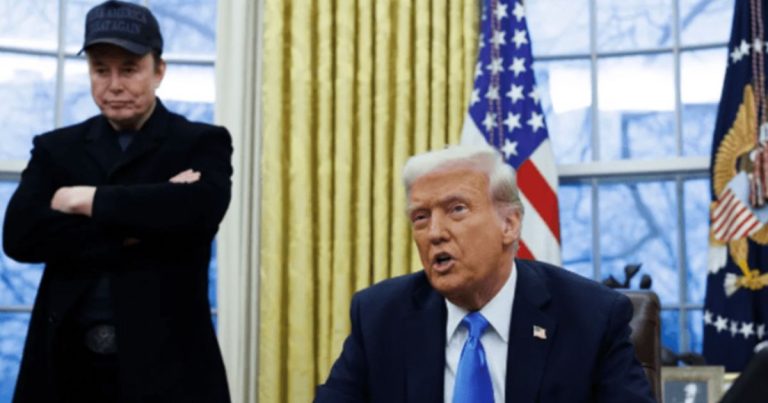
Let’s be honest – we’ve all watched Washington throw our money at an ever-growing bureaucracy for years. The numbers tell the infuriating story: $36 trillion in government debt. A $1.8 trillion deficit last year alone. A federal bureaucracy that has swelled to 2.3 million civilian employees, with taxpayers footing the bill for every salary, benefit, and pension.
When was the last time you saw government actually get smaller instead of larger? For decades, politicians have talked about trimming the federal government. Committees have been formed, reports have been written, and promises have been made. Yet the bureaucracy has only grown larger, more expensive, and less efficient.
That is, until now.
In a bold move that has sent shockwaves through Washington’s administrative state, President Donald Trump and his special adviser Elon Musk have launched an unprecedented effort to dramatically reduce the size of the federal workforce. They started with the termination of over 9,500 federal employees across nearly a dozen agencies.
“Trump says the federal government is too bloated and too much money is lost to waste and fraud,” Reuters reported. “The government has some $36 trillion in debt and ran a $1.8 trillion deficit last year, and there is bipartisan agreement on the need for reform.”
Strategic Downsizing
Notice how the same people who constantly demand “government efficiency” are now crying about these cuts? The initial wave of reductions strategically targeted probationary employees – those in their first year of federal employment who have fewer protections than entrenched bureaucrats. This approach allows for swift action while minimizing legal challenges.
The cuts span multiple agencies, including the Departments of Interior, Energy, Veterans Affairs, Agriculture, and Health and Human Services. Additionally, approximately 75,000 federal workers have accepted voluntary buyout offers, bringing the total workforce reduction to nearly 85,000 positions – the largest downsizing since World War II.
Treasury Secretary Scott Bessent defended the approach, comparing it to a much-needed financial audit.
“These are serious people, and they’re going from agency to agency, doing an audit, looking for best practices,” Bessent said.
Since his appointment to lead the Department of Government Efficiency (DOGE) in early 2025, Musk has brought Silicon Valley-style efficiency metrics to government operations. The same innovative thinking that revolutionized the electric vehicle and space industries is now being applied to streamline federal operations.
The administration’s approach mirrors successful corporate restructuring strategies: identify redundancies, eliminate unnecessary positions, and optimize operations for maximum efficiency. With federal employee compensation consuming 6.6% of the overall budget, these reforms represent a significant step toward fiscal responsibility.
Real Results for Taxpayers
Initial data from the first wave of reforms shows promising results. Agencies report up to 20% faster processing times for basic services, while operating with reduced staff. The Department of Energy alone projects $1.2 billion in annual savings from streamlined operations.
While Democrats and union leaders predictably oppose the reforms, the numbers don’t lie. The initiative goes beyond simple cost-cutting. Indeed, it also represents a fundamental reimagining of how government services can be delivered more effectively with fewer resources.
Trump and Musk’s shared vision for a leaner, more efficient federal government is already inspiring similar reforms at the state level. Several Republican governors have announced plans to review their own state workforces using similar metrics.
As these reforms continue to roll out, the administration’s target of reducing the federal workforce by up to 10% appears well within reach. This would represent the most significant government downsizing since the end of World War II.
The message is clear: the days of unchecked bureaucratic growth are over. American taxpayers deserve a government that works efficiently and responsibly with their hard-earned dollars.
Key Takeaways:
- President Trump and Elon Musk have launched the largest reduction in the federal workforce since WWII, targeting wasteful bureaucracy.
- A strategic focus on probationary employees allows for swift action while maintaining essential services.
- Private sector efficiency methods are revolutionizing government operations, potentially saving billions in taxpayer dollars.
- The initiative demonstrates how conservative principles can solve long-standing government problems.